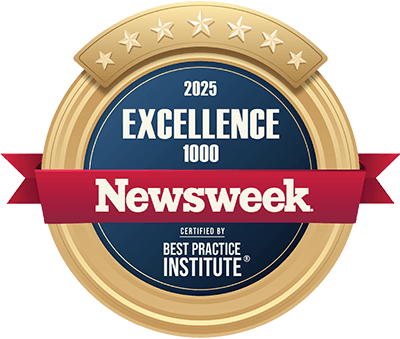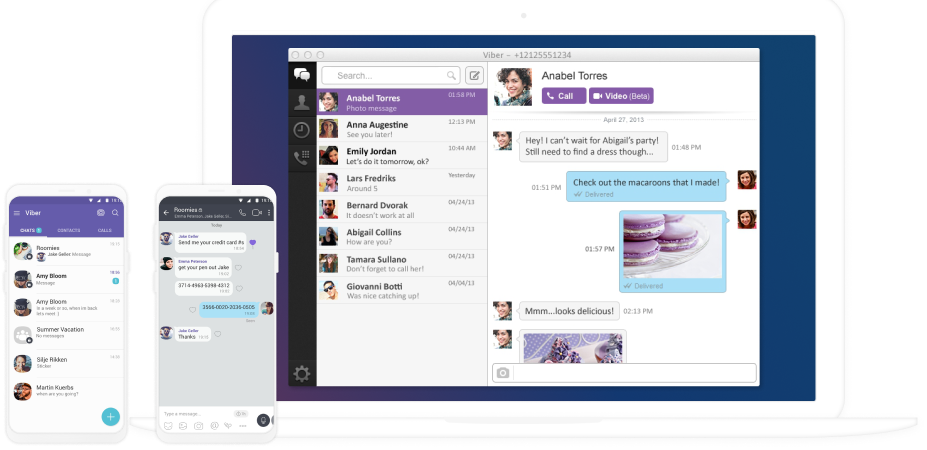How to Hire Developers for a Startup
Hiring Models, Required Talents, Hiring Process, and Costs
ScienceSoft offers professional software development for startups since 1989.
How to Hire a Developer for a Startup: A Summary
|
Possible hiring models: in-house employment, team augmentation, dedicated team. |
Costs: depending on the hiring model. Use our cost calculator to estimate the budget for your case. |
|
Key steps to find developers for startups: defining requirements for candidates, screening & interviewing, hiring, onboarding, team building, scaling a team. |
Talents usually required for a startup: software architect, UX/UI designer, front-end developer, software developers (both front-end and back-end), QA engineer. |
ScienceSoft is ready to provide all the necessary talents for hire under both team augmentation and dedicated team outsourcing cooperation agreements. We assist with onboarding and team building of our experts as well as help with finding cost optimization opportunities.
In this comprehensive guide below, you'll discover proven strategies to effectively hire developers for startups. We’ll explore startup-friendly hiring models for programmers, offer insightful tips on locating and integrating developers into your team, and provide a detailed comparison between the costs of in-house versus outsourcing options.
Models to Hire Developers for Startup
One of the key steps in hiring programmers for startups is choosing the right model. The models differ in costs as well as in the way employment and management responsibilities are distributed.
In-house employment
You provide long-term employment to a team of developers, fully take care of their onboarding and training, and make sure that each of them has the necessary hardware and software to perform their job (either in your office or remotely).
- Employment and related legal paperwork responsibility – your company.
- Management – your PM or a team lead.
- Payment – developers’ salaries, which include payroll taxes and sick leave payments.
I've witnessed firsthand the transformative power of building a cohesive and devoted team through selective hiring. However, I recommend carefully balancing your desire for an in-house team with the imperative to launch efficiently. While the team that shares your vision can be a game-changer, the hiring process often comes with significant costs and time investments. These can lead to serious delays in project time-to-market. Sometimes, leveraging outsourced talent or a mixed team model can provide the best of both worlds, ensuring both team cohesion and market timeliness.
Outsourcing
You partner up with either freelancing programmers or an IT company that lends you its resources under a team augmentation or a dedicated team arrangement.
When you choose to work with freelancers, the challenges of ensuring data protection, timely delivery, and superior software quality are not to be underestimated.
Among startup-friendly outsourcing options, you can choose between team augmentation and a dedicated team.
Team augmentation
You have one or several developers from a staffing vendor with a large pool of IT experts to join your existing in-house team temporarily.
- Employment and related legal paperwork responsibility – vendor.
- Management – your PM or team lead.
- Payment – T&M (according to developers’ hourly rates).
Best for: Established startup teams that prioritize fast time to market and face a tight deadline; startups that experience skill gaps or enter a software evolution stage and need to scale up their team.
Dedicated team
You have a self-managed development team from a staffing vendor to work on your project (or its part) while complying with all your tech, business, and management requirements.
- Employment and related legal paperwork responsibility – vendor.
- Management – vendor.
- Payment – T&M (according to developers’ hourly rates).
Best for: Idea-driven startup initiatives with no in-house development team yet; startups who have a number of products in development and whose in-house team’s efforts have to be focused on a top-priority product.
If you still don’t know which model to choose, feel free to consult ScienceSoft's article on in-house and outsourcing pros and cons.
Talents ScienceSoft Usually Employs in Software Development
Your team’s composition is usually defined by the scale and type of software your startup creates – a web app, a mobile app, SaaS/XaaS, etc. Below, ScienceSoft gives a list of common developer roles for a startup with a mid-scale software project of any type.
Software architect
- Plans out a software architecture.
- Oversees architecture compliance with the project requirements.
- Configures the cloud infrastructure (for a SaaS startup).
UX/UI designer
- Plans out a visual representation of your software’s functionality.
- Ensures intuitive user-software interaction.
- Prepares visual assets for a front-end developer.
- Implements UI design mockups.
- Delivers code of the client-side scripts using HTML, CSS, and JavaScript languages (for web apps) or Objective-C/Swift, Java/Kotlin, C# (for iOS & Android apps).
PM/Team Lead
- Plans out development schedule and distributes tasks.
- Overviews the team’s productivity.
- Communicates with all project stakeholders.
QA engineer
- Creates and runs different types of tests based on software requirements.
- Logs testing results.
- Verifies software compliance with the initially established quality standards.
Consider ScienceSoft as Your Outsourcing Partner
With 36 years in outsourced software development, ScienceSoft offers reliable team augmentation and dedicated team services.
ScienceSoft's experience in agile development ensured smooth project implementation and iterative development of Enonic XP. This enabled us to adjust to the changing market requirements and incorporate features that made us stand out from competition. ScienceSoft's team has become an integrated part of Enonic, and we appreciate their efforts and passion for the product.
Morten Øien Eriksen, CEO at Enonic, a provider of an innovative CMS platform
How to Hire Developers for a Startup in 6 Steps
CB Insights reports that 26% of startups fail because they lack the right team or team culture. To help you avoid this common pitfall, ScienceSoft provides step-by-step guidance and valuable tips on how to hire programmers for a startup effectively.
Step 1. Define requirements for candidates
ScienceSoft recommends starting your hiring process by clearly defining what skills and qualities you want in your team members. First of all, there's a need to understand the required technical competencies based on your software’s technical stack from a software requirements specification (SRS). However, the hiring process doesn't stop at these primary qualifications. Given the unique environment of a startup, where each individual's role is significantly impactful due to the small team size and broad responsibility spectrum, it becomes equally important to evaluate other valuable skills. These additional skills enable team members not only to meet their direct responsibilities but also to contribute meaningfully to the overarching objectives of the startup:
For developers, architects, QA and DevOps engineers
Technical proficiency
Startups often work with the latest technologies to stay competitive. Developers need to be well-versed in these to build effective solutions. Seniors may cost more, but they know how to significantly optimize development and operation costs and avoid multiple, complex, large-scale reworks.
Problem-solving skills
Startups frequently encounter unforeseen challenges. The ability to solve problems creatively can mean the difference between success and failure.
Autonomy and initiative
Without a structured environment, individuals are often required to take initiative and make decisions independently. This autonomy requires confidence in one's skills and an entrepreneurial mindset to drive projects without constant oversight.
Understanding of scalability
Startups aim for growth. The team should know how to build systems that can scale efficiently to accommodate this growth without requiring complete software redesign.
Collaborative mindset
With smaller teams, collaboration is key. Developers, architects, QA and DevOps engineers need to work closely, often in cross-functional teams, to achieve common goals.
Attention to detail
In a startup, resources are limited, including time for quality assurance. Developers with a keen eye for detail help ensure higher product quality from the outset.
Proactive communication
Clear communication helps keep the team aligned, especially in a fast-moving environment where decisions and directions can change quickly.
Innovative thinking
Innovation drives startups. Developers who can think outside the box can contribute significantly to creating unique products or features.
Security awareness
Startups, particularly in tech, handle sensitive data. A strong understanding of security practices is essential to protect this data from the start.
For UX/UI designers
User-centric approach
Startups need to quickly prove their value to users. Designers must ensure the product is intuitive and meets user needs to facilitate adoption and retention.
Collaboration skills
Designers must collaborate with multiple roles to create a cohesive product experience and ensure that designs are feasible within project constraints.
Adaptability
Feedback loops are tight in startups, with frequent iterations based on user feedback or changing business goals. Designers must be flexible and willing to revise their designs in response.
Step 2. Conduct screening and interviewing
The table below shows the scope of your screening and interviewing responsibilities for both in-house and outsourcing hiring models.
|
|
Note: In case of team augmentation and dedicated team arrangements, your first step is to find an outsourcing vendor you trust and partner up by signing a Service Level Agreement. |
When you hire a programmer, three key areas should be checked: their theoretical understanding of the development technology, their strategic approach to coding practices, and their hands-on experience in development (best to verify with a technical task).
Step 3. Formalize the employment
In case of in-house hiring, you’ll need to allocate a significant amount of HR and legal efforts to enroll each developer you decide to take on board.
Vendor cooperation is based on a Service Level Agreement, which stipulates that the vendor remains the legal employer of all developers while you leverage their skills in your project. In other words, SLA is the only major paper you need to take care of regardless of how many talents you will need to join your team in the long run.
Whether you're looking to hire startup developers for a short-term project or considering a long-term partnership, I want to highlight the importance of efficient vendor management. At ScienceSoft, we give our clients access to our internal reporting tools so that they can stay in the loop and feel confident that the team is keeping on track.
Step 4. Carry out onboarding and training
For startups, in-house onboarding includes instilling company values and sharing motivations behind the software idea in new hires. It implies significant newcomer training efforts that can come at a high cost for the productivity of your in-house resources.
Cooperation with a vendor - even with an offshore one - is a sure way to speed up onboarding, as a vendor’s developer pool consists of experts for whom quick adjustment to new requirements and onboarding in 1-2 weeks are parts of the job description. Regular communication between your startup and a vendor’s developers will streamline your collaboration from the get-go and accelerate the ramp-up even further.
Step 5. Build a team
To build a real team, you need to teach developers to feel and show respect for each other’s skills and duties, communicate in a friendly manner in any situation, and be always ready to request and provide help. In in-house employment, ScienceSoft usually achieves this with the help of long-term HR training or during a small, carefully managed test project.
However, spending so much time and effort on training can be considered a luxury for most startups. A dedicated team cooperation model may be a good alternative since it allows you to enjoy the results of cohesive teamwork without investing in team-building and fully entrusting it to a vendor instead.
Step 6. Scale a team for software evolution
After an MVP release to the market, you can face new challenging needs during software evolution: implementation of advanced features (e.g., AI, blockchain, AR), CI/CD setup, continuous software maintenance and support, etc. For an in-house team, this implies a number of new roles and a months-long wait for the recruiters to fill the openings with the fitting candidates, which can hold back your software growth.
With outsourced cooperation, your needs can be addressed within a few days after signing a ‘team scale up’ addendum to the SLA. When cooperating with ScienceSoft, you get access to the vendor’s pool of experts in cutting-edge tech, DevOps, L1-L3 support, or other fields and can welcome new necessary talents in your augmented or dedicated team in 1-2 days.
Benefits of Cooperation with ScienceSoft
Fast time to market
Immediate project start, major releases every 2-6 weeks, minor updates up to several times a day.
Quality result
Clean code and high-quality unit tests.Established Lean, Agile and DevOps culture.
High competence
Proficiency in the latest frameworks and language versions, architecture designs, and innovative techs.
Costs of Hiring Programmers for a Startup
Costs to hire developers for your startup depend on multiple factors:
Assemble Your Team for an Accurate Project Cost Estimation
Just select the required talents below, and we’ll be quick to provide their rates.
Thank you for your request!
We will analyze your needs and get back to you within a business day to share ballpark rates.
In the meantime, would you like to learn more about ScienceSoft?
- 4,200+ successful projects: explore our portfolio.
- 1,400+ incredible clients: read what they say.
- 750+ devoted experts: meet our team.


About ScienceSoft
ScienceSoft is an IT consultancy and software development company headquartered in McKinney, Texas. We offer software development team augmentation and dedicated development team outsourcing to startups, assisting them in faster software launch and scaled support & evolution. Being ISO 9001 and ISO 27001 certified, we ensure adherence to the required quality and data security standards.








